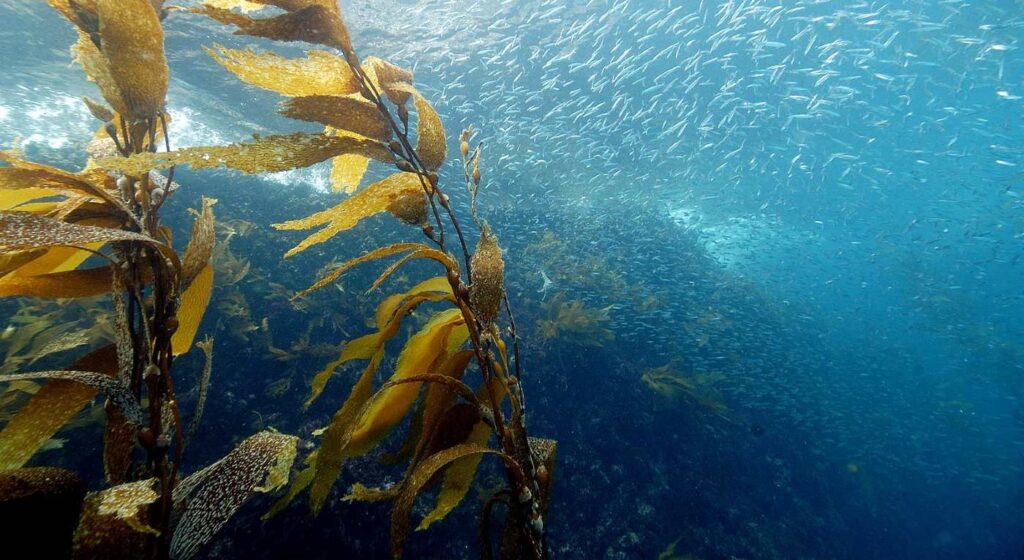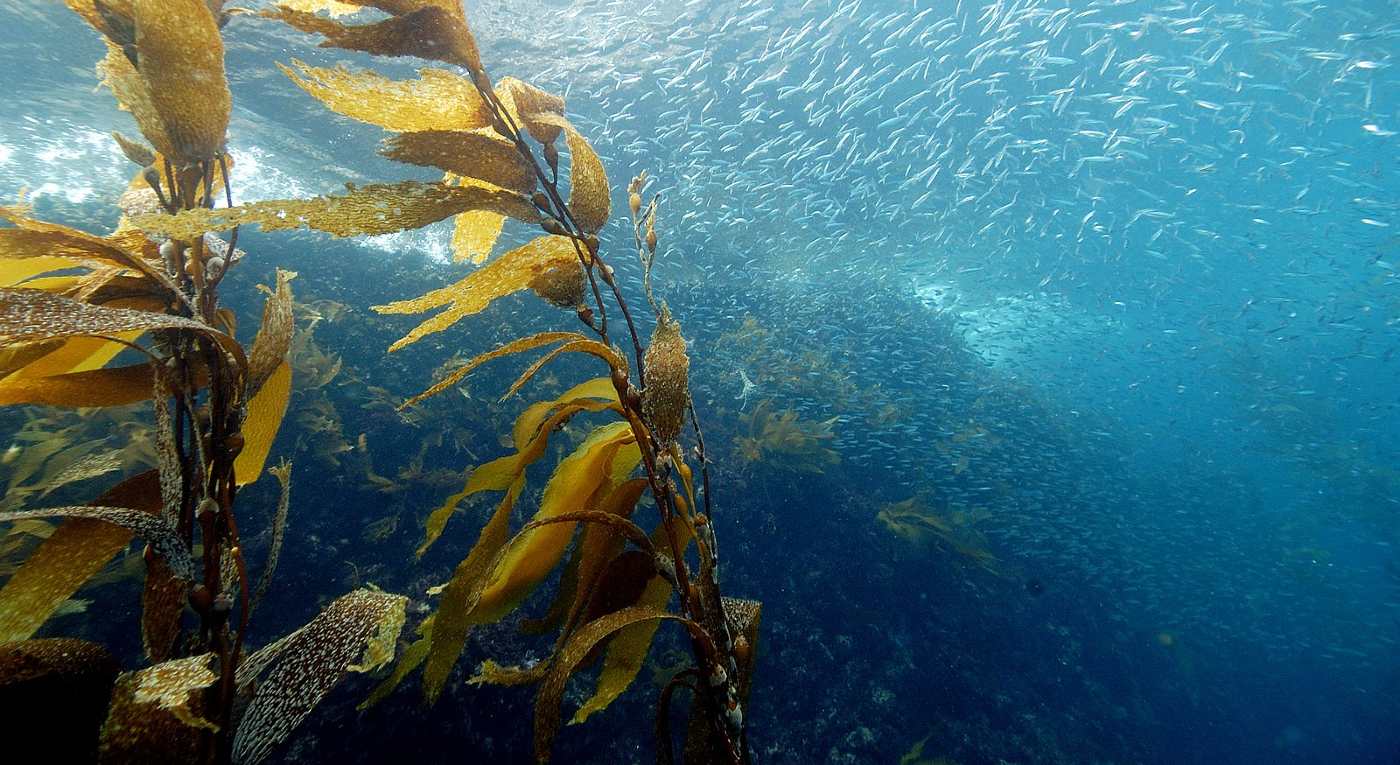
Australian scientists have been uncovering a near-unending list of ways kelp and other kinds of seaweed can help in the fight against climate change.
It’s the continued study and harvesting of seaweed species in Australia that has Dr. Pia Winberg convinced they can play as large a role in human civilization as commodities like wheat, lumber, plastic, concrete, or nitrogen.
In the same way that Australia has unique animals found nowhere else, their panoply of marine plant species is richer and more diverse than most places on Earth.
“If we used the infrastructure in the oceans and created seaweed islands, we would actually eliminate a lot of the climate change issues we have today,” she says, in an interview and documentary from the BBC’s Isabelle Gerretsen.
Her reasoning is based around seaweed’s rapid growth rate and ability to absorb carbon at much, much faster rates than terrestrial plants.
MORE: This Tasty Seaweed Reduces Cow Emissions by 99%—and It Could Soon Be a Climate Gamechanger
Coupled with seaweed’s rich nutrient profile and unique molecular structure, Winberg believes it should be farmed on the largest scale, and that it could balance emissions, deacidify the oceans, change the way we farm, and open up a Pandora’s box of new materials research that could include everything from biodegradable plastics to construction materials to artificial body parts.
Seaweed: a primer
45,000 years ago, Aboriginal Australians were making water carriers out of kelp leaves. Its rubbery and flexible, yet thick and resilient texture made it perfect for the task.
Nori, the seaweed eaten in Japanese cuisine, was the first-ever to be farmed when it was grown off the coast of Japan back in 1670.
All kelp is seaweed, but not all seaweed is kelp. In fact, much like a LEGO set, the three species of seaweed are “red, yellow, and brown”. Kelp is a brown seaweed.
In optimal conditions kelp can grow a staggering two feet per day, while not requiring nitrogen-rich fertilizer like terrestrial crops, or, obviously, de-weeding. Just like on land, kelp and other seaweeds use photosynthesis to grow biomass by absorbing CO2, only they do at an estimated rate 50 times greater even than forests.
During the devastating fires in the Amazon rainforest a few years ago, op-eds and other articles were awash with the phrase “Lungs of the Earth.” In reality it’s kelp that deserves such a title.
According to a research report from the Marine Climate Change Program at Conservation International, the current marine environment is where any modern, intelligent action against climate change should occur. 90% of the world’s carbon budget is held in the oceans, while between 30%-50% of all human-caused emissions have been absorbed by them.
RELATED: Student Treks to Yellowstone and Finds Bacteria That Eats Pollution and ‘Breathes’ Electricity
Winberg and her research associates feel seaweed has a big part to play in this figure. How big? Well one study found that the total emissions from California’s agriculture sector could be absorbed if merely 3.8% of her coastal waters were turned over to kelp cultivation.
A model for the future
Winberg isn’t an armchair algae activist; her family farm at Shoalhaven, New South Wales, puts into practice what could be considered a model for future agriculture and industry.
Next door, a wheat refinery pumps its emissions into large vats of seawater where seaweed uses it through photosynthesis to grow. Nitrogen and other nutrients from the refinery fortify the green seaweed, allowing it to be turned into all kinds of different substrates for products like animal feed, cosmetics, and even ice cream.
“Even just a 10% replacement of seaweed in wheat production or meat production in food would have a major impact,” explains Winberg, who believes that offshore seaweed cultivation in Australia is one of the best ways to target widescale seaweed farming.
A 50-hectare mussel farm in Jarvis Bay is implementing this concept and growing seaweed alongside their mussel cultivation. The fishermen believe it improves the quality of the mussels, reasoning that the best shellfish always come from areas rich in marine plants.
Their tradesman’s instincts aren’t wrong, as a study found that the absorption of CO2 by kelp creates a buffer in their immediate vicinity, reducing the acidity levels of the ocean water around them, giving fish and shellfish better conditions to grow. When cultivated en masse, this deacidification could change the whole ocean ecosystem.
CHECK OUT: Trees Growing Out of Buildings Could Help Heal China’s Air Pollution Problem
In 2020 GNN reported on the development of a dietary supplement that when given to cows eliminated 80% of the methane produced through their guts’ fermentation of feed, effectively eliminating the 2.8% of American emissions attributable to all livestock animals. That supplement was made from seaweed.
Given that methane stays in the atmosphere for only 12 years, it wouldn’t take too long for an entire nation’s livestock industry would be methane neutral.
Life began in the oceans, and rather than a magic space metal or nuclear fusion, the solution to many of the world’s biggest problems may require us to look back into our past, rather than into the future.
(WATCH the BBC Future video about this story below.)
GREEN UP Your Friends’ News Feeds—Share This Story With Them…





















This is very encouraging. I have always love the ocean and now we are finally paying attention to the love the ocean has for our planet. We are stewards of this world not master of it.
@wingmanx31 – I concur & have for a long portion of life. Seeing a lot of “new” research and means to address the changing climate leaves me a thought. The Earth/Nature may create disaster but in balanced creates a mean/s to cope, continue.
It is always heartening to see we are finding more and more ways to counter-balance the damage we humans do to the environment. But, I also hope we continue to be equally interested in moving toward not creating those problems in the first place. And while it is undeniably valuable to consider “an entire nation’s livestock industry would be methane neutral,” it will be even more beneficial, and compassionate, to work hand-in-hand with alternatives to factory farming itself.